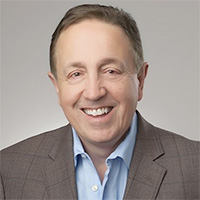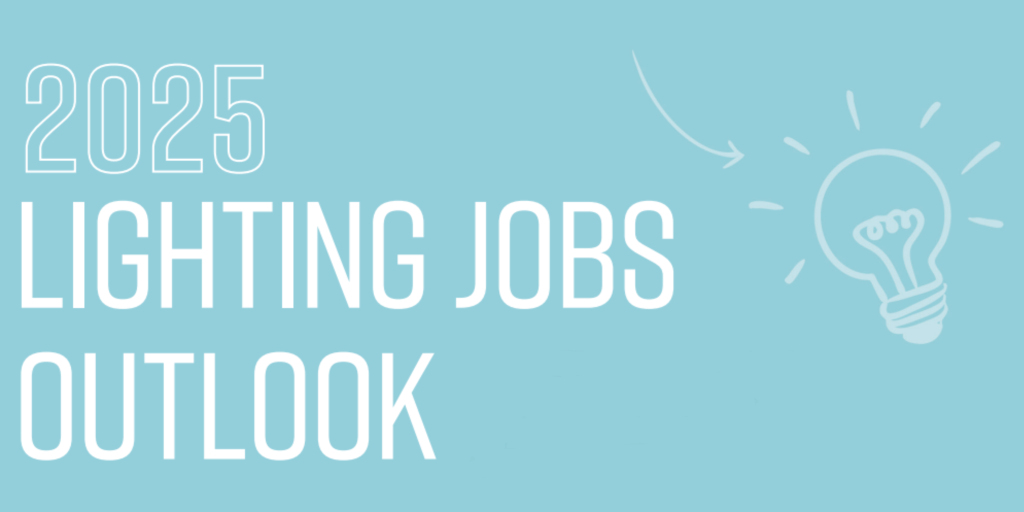Soft skills are essential in an ever-evolving market
Last year felt like a very eventful trip around the Sun (in ways both positive and negative), but 2025 seems like a blank slate in some ways. This is our 12th year examining the jobs and hiring market for lighting, electrical, and controls, and for better or worse, I remain a (guarded) optimist. I am very excited at our expert panel’s thoughts about the job market as well as employee and hiring dynamics for the year ahead in lighting. Our panelists come from manufacturing, lighting design, and independent rep agencies: Jenny Brust, senior vice president of Sales and Marketing, H.E. Williams, Inc.; Ted Chappell, president, Inter-Lux; Jill Cody, IALD, CLD, LC, LEED AP, principal, Dark Light Design; Archit Jain, Member IES, IALD, LEED AP, principal, Oculus Light Studio; Mark McClear, CEO, Casambi Technologies; and Tejal Thakur, founder, Lightspek. I’m extremely grateful to the aforementioned panelists for their contributions and insights.

Paul Pompeo: What positions will be in most demand and will any positions see a reduction in demand?
Ted Chappell: We see expanded opportunities in tech/engineering positions due to the technical nature of LEDs and controls. In addition, we expect supply chain position demand to remain robust as companies continue to expand their sourcing outreach to reduce costs and lead times while trying to continually improve quality.
Jenny Brust: I also think we’ll see a rise in demand for engineering expertise—specifically in technologies that facilitate product innovation.
Jill Cody: Lighting designers, especially mid-career professionals, will continue to be in high demand. For those who want to be on a path to leadership and/or ownership, there are definitely opportunities to move on to that path as principals and owners move closer to retirement. On the design side, I don’t really see a reduction in demand for any particular position.
Tejal Thakur: I believe digital marketing specialists and content creators are essential sales roles of the future. Young professionals and designers consume technology in a different way than previous generations, and social media marketing professionals will continue to be in high demand.
Archit Jain: For our studio, we like people who can do it all. They may be specialists in certain aspects, but they do have the ability to assist on any part of a project as needed. This may be client interaction, design concepts, documentation, marketing, etc. Single-skill positions—CAD/3-D modelers, graphics roles—may be useful in a few firms, but most lighting design firms of our size want personnel with multiple skill sets.
Mark McClear: We’ll continue to invest in software engineering and marketing at our headquarters in Finland to further enhance our product offerings and build stronger global brand recognition to align with our projected growth. I expect we will also open new sales positions across Europe, Asia, and North America as part of our strategy to further expand into key markets to capture growing demand and remove even better serve our customers globally.
Thakur: Roles facing reduced demand tend to involve routine tasks or roles that are, or will be, impacted by digital and automation advances.
Pompeo: Which technical and soft skills are most beneficial for employees to possess in 2025?
Cody: The technical skills that we all need—the understanding of the technology as well as the tools to produce our design work—haven’t changed much. I think one of the most critical soft skills moving forward is adaptability. The pace of change isn’t slowing down—not on the technology side or the process side. As our design tools evolve and schedules and fees continue to tighten, designers will have to adapt how they work to remain competitive.
Jain: Soft skills in terms of collaboration with clients and communication skills are always beneficial. While email, chat, and texts are important, it’s always important to pick up the phone. Philosophically, in our studio, we stress humility, fearlessness, and respect. These are critical soft skills to have at any level and in any position.
McClear: Over half of our employees work outside of our three regional headquarters, making remote work an integral part of daily life for our company. For this to run smoothly, we rely on our distributed team to take initiative, manage their time effectively, and communicate clearly, especially on key matters. These soft skills are essential to keeping everyone aligned and connected, regardless of location. Additionally, as we enter the AI age, critical thinking is such a crucial soft skill when it comes to interpreting data insights thoughtfully and making informed decisions.
Thakur: Soft skills such as emotional intelligence, communication, agility and flexibility, and a critical thinking/growth mindset are the most important factors that I have always looked for in employees.
Chappell: We always look for a positive attitude and a willingness to learn new skills and improve at all levels. We believe employees who operate with integrity and accountability will always rise to the top.
“Single-skill positions—CAD/3-D modelers, graphics roles—may be useful in a few firms, but most lighting design firms of our size want personnel with multiple skill sets”
-Jain
Brust: Contributing with an energy and desire to add value to the process is critical for career development. Work ethic and attitude go such a long way in one’s career. As leaders, we should reward individuals who are coachable and curious because that drives growth. I think if you’re new to the workforce, it’s important to be mindful of colleagues’ positions within the organization, because those are the mentors that can help you advance your career.
Pompeo: Have you increased your use of AI, and do you see AI replacing certain positions in 2025? If so, which roles?
McClear: We have no plans to replace any roles with AI. Over the last couple of years, we’ve provided AI training and tools to all employees to ensure everyone gained a foundational understanding. For 2025, we aim to use AI more extensively in marketing and sales, particularly for language translation…we support six or seven languages. We will also use AI for analyzing sales performance, pipeline trends, and promotional impact. These AI enhancements won’t replace any team members or existing processes but will help us speed up and strengthen the work we’re already doing manually.
Brust: Currently, we really only use AI occasionally for alternate ways to articulate a message. I don’t see it fully replacing positions in 2025 for our firm but certainly see potential for its use in some business processes.
Chappell: We use AI mostly to support our marketing initiatives. We don’t see roles that AI would replace at the moment. It’s more a valuable tool for our teams to increase efficiency.
Cody: We’re being deliberate in our approach to which tasks we are using AI for, and it will obviously continue to evolve as the technology advances. I don’t see it replacing any positions at this point, but mostly driving increased efficiency.
Jain: We are experimenting with AI. In the next few years, we imagine that AI may be able to produce a low-level lighting design for basic spaces that can then be tweaked by the designers. This way, more time can be spent on high-value spaces. No positions are being replaced by AI. Even in the future, we are not imagining replacing any positions.
Thakur: I believe AI will radically transform our industry. Understanding this technology is critical to lasting success in any industry. However, I don’t believe AI can replace human empathy and compassion, which is an essential part of every successful business. I do think that it will transform the efficiency. The roles experiencing growth are often technology driven or require specialized knowledge that can’t be easily automated.
Pompeo: Will virtual reality (VR) in lighting design create new roles in manufacturers and/or design firms, or transform the responsibilities for any current roles in your company?
Jain: If virtual reality is defined as wearing VR goggles and looking at lighting in a model, that will take a while until goggles start becoming lightweight and commonplace. If the intent is to dynamically see lighting in an architectural model on a screen, then that is something we are actively pursuing. No new roles are being envisioned immediately.
Chappell: I believe it can help us communicate product and application ideas by enhancing our rendering and 3-D modeling.
Thakur: Virtual reality is a tough one. I believe people still want and need human interaction and that is why this technology hasn’t been fully accepted.
Cody: As the technology evolves, we will definitely need designers who are interested in implementing VR into our work. This would be a specialized work task that we would see just a few people taking on.
Pompeo: Do you anticipate hiring more contract employees, fewer, or about the same as you did in 2024?
Brust: Fewer. We typically look to hire local, full-time employees. We also work with nearby educational institutions on internship and apprenticeship programs to add talent. Our company culture plays a big role in how we operate and having a team that understands that is important to our success.
McClear: We rely on contract employees for a few niche roles within engineering. Some of these positions may become permanent in 2025, and we anticipate new specialized opportunities to emerge as well. Net should be about the same as 2024.
Chappell: We expect a similar dynamic to 2024.
Thakur: We expect about the same, too.
Cody: We aren’t currently using any contract employees; I don’t think that will change in 2025.
Jain: We only have a few contract roles, and those will remain the same in the next year.
Pompeo: What is your current in-office/remote work model and do you see that changing in the year ahead?
Thakur: I believe more companies prefer to have employees back in their offices. I think that collaboration is key for success and for good design.
Chappell: Our model varies by job description and department. We expect a greater percentage of our workforce to gradually return to the office 100% of the time.
Jain: We recently went from a two-day a week schedule to three days, with Monday and Friday as work from home. We also work a 9 day/80-hr schedule with alternate Fridays off . This model gives us some focused time when working from home and collaboration time three days a week in the studio. We hope to carry this on indefinitely at this point.
Cody: We have some employees who are based in our offices and others who a fully remote. Our in-office teams are currently working on a hybrid model, and it seems to be working well. However, we are seeing many of our clients returning to a full-time, in-office model and that may drive a change for our teams.
McClear: Our corporate headquarters is located in Helsinki, Finland, with regional headquarters in Atlanta and Singapore for North America and Asia, respectively. More than 50% of our employees work outside the cities where our headquarters are based and are strategically located where they can best serve our partners. As a result, we operate as a largely remote global company, with in-person meetings scheduled as needed to support collaboration and client engagement.
Brust: Today, fewer than 2% of our employees work remote, and I don’t see that changing. In my opinion, being nimble and providing the level of service our customers deserve requires a knowledgeable, in-house team. This allows us to collaborate, solve problems, and answer questions in real time, benefiting our customers as well as the health of our business…and it hopefully helps us to have a little fun in the process.
THE AUTHOR |
Paul Pompeo is president of The Pompeo Group (www.pompeo.com), an executive recruiting firm in lighting, controls, electrical, and IoT.


